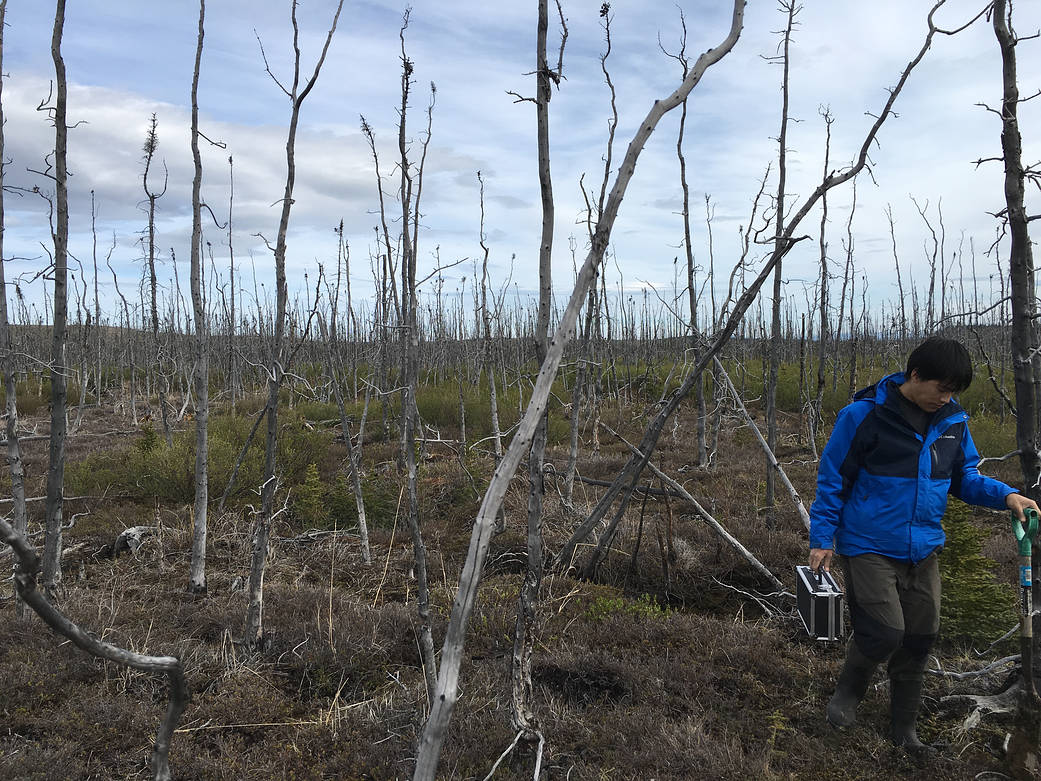Standing among dead black spruce trees in a burned area near Delta Junction, Richard Chen, a graduate student at University of Southern California, dug soil sampling pits throughout the burned area to sample for organic carbon content of the soil, measure the depth-to-permafrost, and to make electronic measurements of soil moisture for NASA’s Arctic-Boreal Vulnerability Experiment (ABoVE) campaign.
Wildfires in the Arctic often burn far away from populated areas, but their impacts are felt around the globe. From field and laboratory work to airborne campaigns and satellites, NASA is studying why boreal forests and tundra fires have become more frequent and powerful and what that means for climate forecasting, ecosystems and human health.
Credits: NASA/Peter Griffith




























